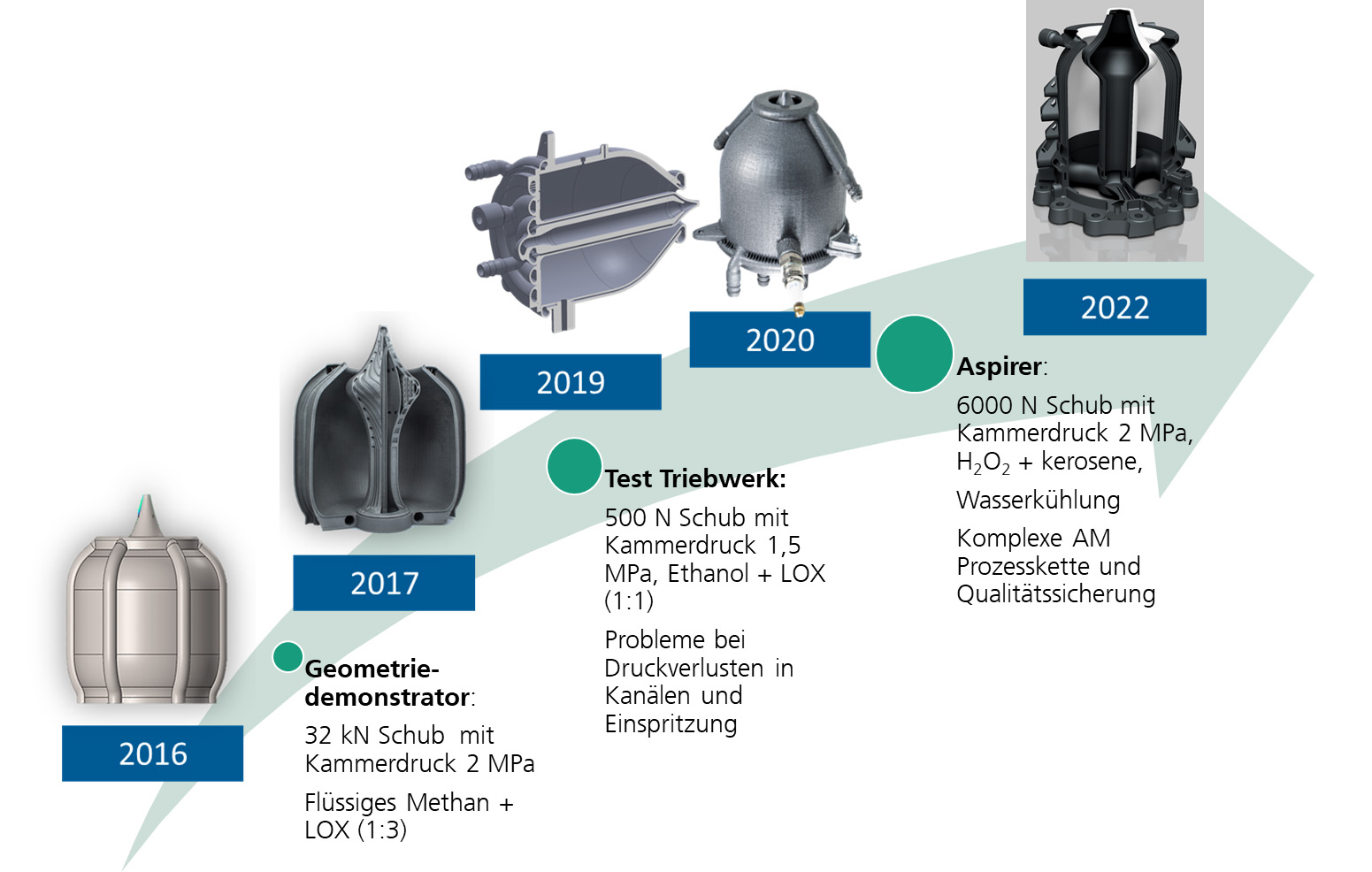AeroSPIke Rocket Engine Realisation
Motivation
The aerospike engine is an alternative rocket engine concept to the bell-shaped nozzle. It has the advantage that the resulting thrust can be ideally adapted for any ambient pressure by adjusting the mass flow. In theory, this can save up to 30% fuel. The concept was first developed in the 1960s, but for a long time could not be implemented using conventional methods: The "spike" or "stinger" is located in the hot gas stream and, without efficient cooling, melts away over time. Thanks to additive manufacturing and the integration of flow-adapted cooling channels close to the surface, realization is now possible after 60 years.
Objectives and Approaches
In the ASPIRER project, an aerospike engine is being designed, additively manufactured and tested in collaboration with the Institute of Aerospace Engineering at TU Dresden. The selected material is the nickel-base superalloy INCONEL®718. The manufacturing processes used include laser powder bed fusion (selective laser beam melting), heat treatment, mechanical rework on functional and connection surfaces, thermal coating from the thermally highly stressed spike and welding of the shroud and spike. The project is funded by ESA, other project partners are ArianeGroup GmbH and the Łukasiewicz Research Network - Institute of Aviation (IoA). The process chain for the 6000 N thrust Aerospike engine was extensively validated at the start of the project in terms of mechanical properties and manufacturability using additive processes. Destructive testing methods such as micrographs and tensile specimens and non-destructive testing such as computed tomography and 3D scanning are employed for quality assurance.
Innovations and Propsects
There are currently very few attempts worldwide to manufacture and test an aerospike engine, so the experimental data available is very limited. The project therefore makes the important contribution of demonstrating feasibility and collecting new data for manufacturability and quality assurance. In addition, test data will be obtained as part of a test campaign at partner IoA in order to improve the design and manufacture of future aerospike engines. The findings can be transferred to other engine components and types.
 Fraunhofer Institute for Material and Beam Technology IWS
Fraunhofer Institute for Material and Beam Technology IWS